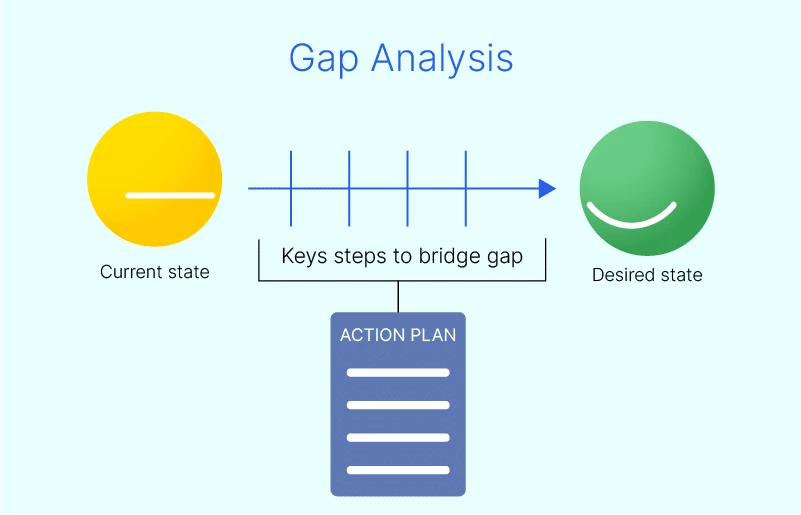Welcome back to our second and final blog discussing Data Teams: A Unified Management Model for Successful Data-Focused Teams! This edition also features a recap of the 🔥 Ask Me Anything (AMA) sesh with the author, Jesse Anderson. Because this book targets management and anyone looking to catapult their career into management, it focuses on the underlying issues that companies looking to capitalize on data-driven insights may run into.
Now, if you missed the second book club discussion live, here’s the TL;DR 👇
The smoothest organizational changes must start from the top down.
I’ll explain everything in detail, so let’s jump right into the discussion from the book club and highlights from the AMA session!
Organizational change starts from the 🔝 ⬇️
As Jesse delineates in text, there are three types of change that can occur within a business:
- Top-down: This starts with those at the top of a business whether it be members of the C-suite, board members, etc.
- Middle pressure (up and down): This occurs when middle management sees the need for business change and must show those running the business why the change is needed. Now, they have to convince individual contributors it is worth spending time on these changes.
- Bottom-up: This is (usually) the most difficult to implement. Individual contributors may see a need for change and must convince everyone (i.e. management team and the C-suite) why these changes are important for the business.
All three of these changes can be painful and slow processes within an organization. But, as you’d probably expect, top-down change “is the least painful way of effecting the change” because the top of the business must fully buy in to the need for change first.
And, oftentimes, members of the C-suite truly want to become data-driven organizations – they simply lack the understanding of the costs and additional infrastructure required to make these desires a reality. If they do start to initiate change, though, upper management’s actions speak far louder than their words.
🤔 Are they providing additional funding to data teams for new technologies (cloud computing, distributed systems, etc.)? Are they giving existing team members sufficient time to learn and adopt the new methodologies required for creating a data-driven business?
No matter what C-suite members say to the rest of the organization, if their actions don’t align with their message, progress will either be painstakingly slow or a continuous uphill battle of spending and hiring debates.
Humans have more influence on change than technology
Management rarely implements a data team in the early stages of a company. This observation led Jesse to an interesting revelation: He has never seen a data team that is stronger than the overall organization.
Given that data teams are often an afterthought, members of this newly-formed team generally struggle to convince management of their needs (both from a staffing and technology standpoint). Simply creating a data team will not create a data-driven organization overnight. It can take months or even years to get to that point.
And when you’re in the thick of it, creating a data team within a well-established company can feel a bit like trying to change a tire on a moving car.
That’s because the changes required to implement a successful data team are largely driven by humans – not the technology used.
To bolster that argument, Ted Malaska, the senior director of application software at SpaceX, provides a mindset that few in the tech world possess: Loving to Hate Technology. Rather than viewing specific tools or technologies as a silver bullet that will ameliorate every issue, you need to understand what pitfalls and shortcomings various tools include in order to find the best solution for the business case at hand. 🙌
Human behavior and psychology blur the lines between ability gaps and skill gaps
Armed with my newfound, top-down knowledge, I went into the AMA understanding that change has to start with management. And after hearing Jesse Anderson speak with our book club, I began to realize that almost every issue that pops up is a direct byproduct of human nature. Why? Because human nature blurs the boundary between ability and skill gaps.
This issue rarely stems from the industry in which a business operates, the technology stack used, or the macro environment. Whether it’s a consumer hardware company, a recreation-focused business, or a high-flying tech start-up, the issues that crop up are almost always a direct result of inherent human nature. And when those issues cause a disconnect between a management team and the individual contributors, it creates a whole lot of mistrust, resentment, and ultimately, failure. 😞
Jesse has seen countless examples of management teams mislabeling an ‘ability gap’ as a ‘skill gap.’ For example, let’s say that a data team manager is looking to build out a distributed system. However, they’d prefer to retrain one of their existing SQL developers rather than hire an external, qualified data engineer who already possesses the key skills needed to execute. What often happens in this scenario is that the SQL developer simply cannot grasp the advanced programming required for distributed systems to succeed as a data engineer.
Worse, when this issue arises at the beginning of the data-driven journey, management maintains false hope that this individual or group of individuals just needs a little more time to grasp these complex concepts. But, as Jesse pointed out in the AMA, many fall into the flawed logic of a sunk-cost fallacy. ⚓ In other words, managers may feel or think:
“This person has been a fantastic employee for years, I can’t give up on them now.”
Or
“If I just provide more learning material and time, they’ll eventually understand what our company needs right now.”
Or even
“I’ve already spent tons of money trying to retrain this individual, I can’t give up now.”
It’s natural for managers to feel this way towards other humans. Not only do we want to form bonds with coworkers but, as a collective group, we don’t want to hurt feelings.
For this reason, the right course of action is also the harder decision: accept this individual possesses an ability gap, not a skill gap. Management teams could save previously wasted money and resources if they simply hired someone with the necessary skills, or even carefully vetted which employees have the ability to learn a more advanced technology.

Unfortunately, there is no course of action for an ability gap: The individual in question simply lacks the innate ability to learn more complex concepts or technology. In fact, as Jesse posits, the presence of ability gaps in humans is Darwinistic.
Achieving synchronicity starts with understanding
This wraps up our book club for Data Teams: A Unified Management Model for Successful Data-Focused Teams! My greatest takeaway from both reading the book and listening to Jesse speak during the AMA is this: building a successful data team requires a mutual understanding between management and individual contributors.
At the end of the day, we are all human. Though obstacles will always cause roadblocks for that exact reason, a mutual understanding of the complexities, costs, and personnel required for building a data-driven organization, makes the process of change smoother.
And if the individual contributors understand how their unique tasks tie into the larger organization (i.e. what business need does this task accomplish?), there will be synchronicity among management and employees. 🤝
After finishing this book and hearing Jesse speak, I can say with certainty that this book is the best guide for management teams looking to build out their data teams.
✨ If you're interested in joining a wonderful community of like-minded data professionals, check out the Operational Analytics Club. The book club is simply one portion of this fantastic club; there are also workshops, mentorship opportunities, and much more.

















